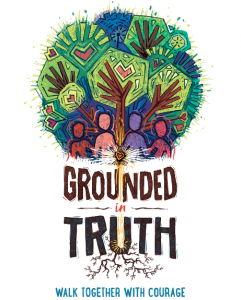I grew up in the Parramatta area where there’s a strong connection to the local Aboriginal community. My mother is a librarian and as a young child, she would bring books back from her library. Often these books were Dreamtime stories that explained the creations of the world and gave meaning to why flora, fauna and landscapes are the way they are. I loved reading these books as I felt a connection to their explanation of the world.
Now as I’ve grown older, I’ve held that fascination and respect with Aboriginal culture. I still reside in the Parramatta area but when I travel interstate, I make a conscious effort to be in contact with the local Aboriginal community of the area and go out of my way to book tours with local Aboriginal communities. Last year, I travelled to the Northern Territory and felt privileged to walk around Uluru and Kata-Tjuta (a similar rock formation that is thought to have been connected to Uluru many lifetimes ago). I went on a day tour with local tour guides from the Pudakul Aboriginal Cultural Tours where they welcomed us onto their land.
 One of the local elders guided us through his land, pulled off different parts of trees (bark, leaves, fruits) and explained how each part of the tree could be used for different things. They used bark from certain trees to wrap up their loved ones who had passed away and placed them in trees. Certain leaves were used for medicinal purposes and certain fruit like the Gugadju (Kakadu Plum) has more vitamin C than any other fruit. While he was talking, I could feel the wealth of knowledge passed down from generation to generation – from him and his family on to his daughters. I was in awe.
One of the local elders guided us through his land, pulled off different parts of trees (bark, leaves, fruits) and explained how each part of the tree could be used for different things. They used bark from certain trees to wrap up their loved ones who had passed away and placed them in trees. Certain leaves were used for medicinal purposes and certain fruit like the Gugadju (Kakadu Plum) has more vitamin C than any other fruit. While he was talking, I could feel the wealth of knowledge passed down from generation to generation – from him and his family on to his daughters. I was in awe.
Another time I listened to a story with a local Aboriginal woman when I travelled down to Jervis Bay at Booderee National Park. It was of how the platypus was created. I remember the woman telling us that when colonists first came to Australia and saw a platypus, they thought it was a trick played on them by the local people because it was so unbelievable to see such a creature (with a duck bill, webbed feet and a beaver body). They thought the local people had sewed together different body parts. It was only later that they understood this as a native Australian animal. It just made me think about the tens of thousands of years of knowledge that Aboriginal people have – the plant and animal life that they know so well and the transformations in the land that they have witnessed.
The theme for Reconciliation Week this year is ‘grounded in truth, walk together with courage’. As Dr Lyndon Ormond-Parker says, ‘walking together means learning from each other’. And that’s exactly it. We are all connected through the land that we walk on but non-Aboriginal people have a lot to learn about the land, the history, the stories and the truth of what occurred. It is time for all of us to have the courage to open our ears, hearts and minds.
Written by Ranjani, Photo from Reconciliation Australia’s website
comment closed